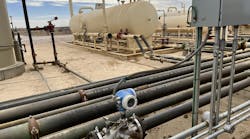Previous articles described the sewage collection systems for two adjacent sewage districts and how the zero on the fourth flowmeter was elevated, which increased the first district’s bills.
In addition, calibration checks of the fourth flowmeter were performed under operating conditions using relatively inaccurate calibration techniques to check the operation of this flowmeter. It was anecdotally reported that the flowmeter calibration was originally checked by having a person in one manhole manually measure the liquid level in the flowmeter primary element and yell that level to a person above ground. He would then turn and yell the value down to another person in an adjacent manhole, where the transmitter was located, who would compare that value with the output of the transmitter.
This may sound reasonable because there was sewage flowing at all times. However, the flow rate was not steady and tended to increase and decrease during relatively short periods of time, which meant that the transmitter measurement could change by the time the level was measured by a person near the flowmeter primary element and communicated to the person near the transmitter. Aside from only checking the calibration at one operating flow rate, this calibration check was performed manually while the flow rate was changing, which introduced significant additional sources of calibration error.
Some years prior to my visit, a new transmitter for the fourth flowmeter was installed in the same manhole as the flowmeter primary element, so the level and transmitter output could be checked by one person without yelling. This technique was better than the previous technique by eliminating the verbal communications (yelling up and down manholes) because the flowmeter primary element and transmitter were located in the same manhole. This installation also included a ruler on a sight glass that could be isolated from the flowmeter primary element and be used to calibrate the transmitter zero and span without having to measure the liquid level in the flowmeter primary element.
Read more about the fourth flowmeter next month.
David W. Spitzer is a principal at Spitzer and Boyes, LLC, which offers engineering, focused market research, writing/editing white papers, strategic marketing consulting, distribution consulting, seminars and expert witness services for manufacturing and automation companies. Spitzer has written more than 400 technical articles and 10 books about flow measurement, instrumentation and process control. He can be reached at 845-623-1830 or via spitzerandboyes.com.


